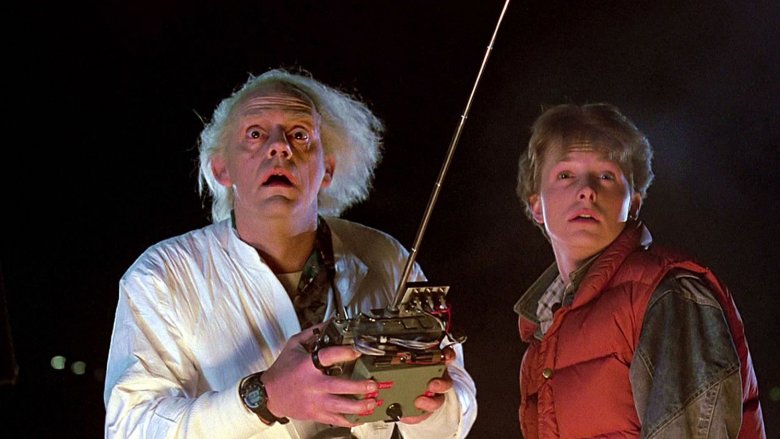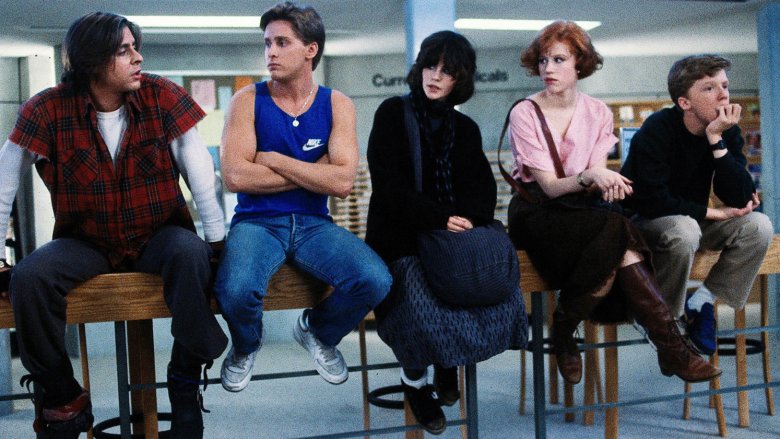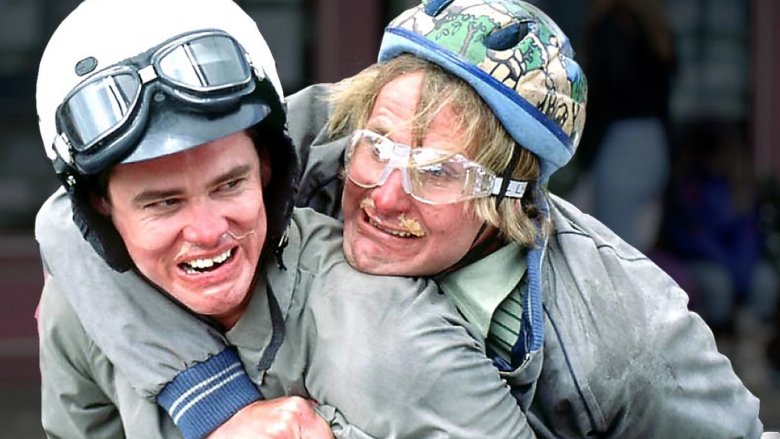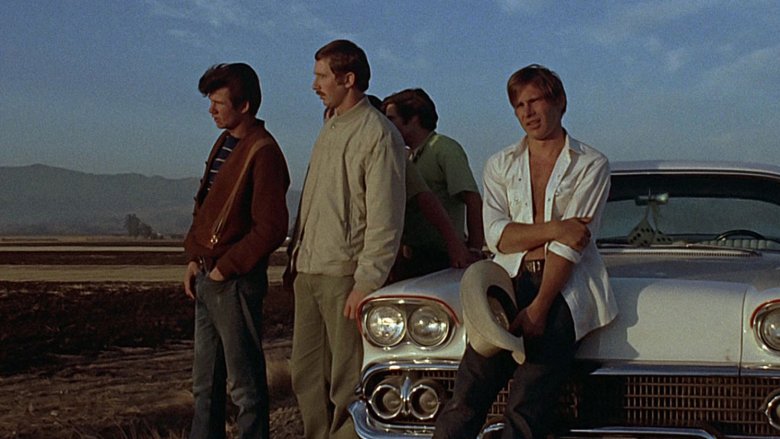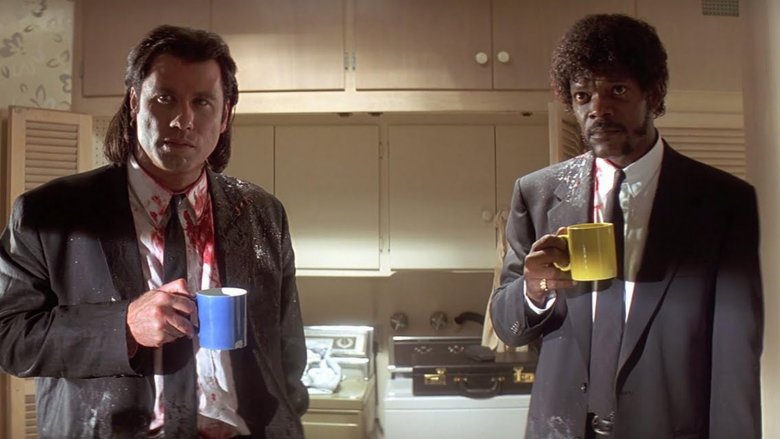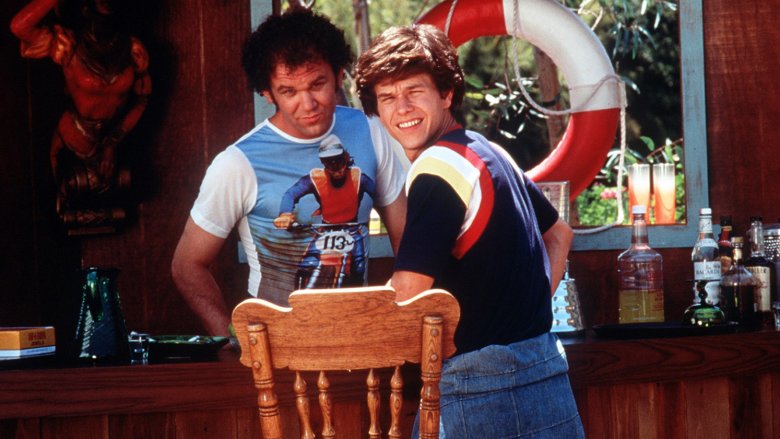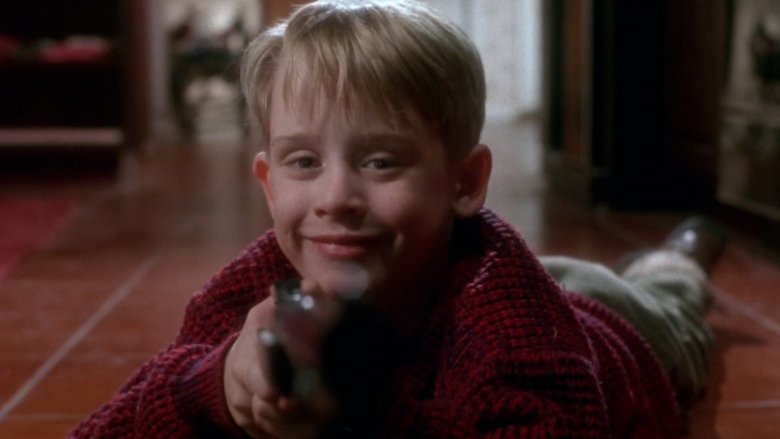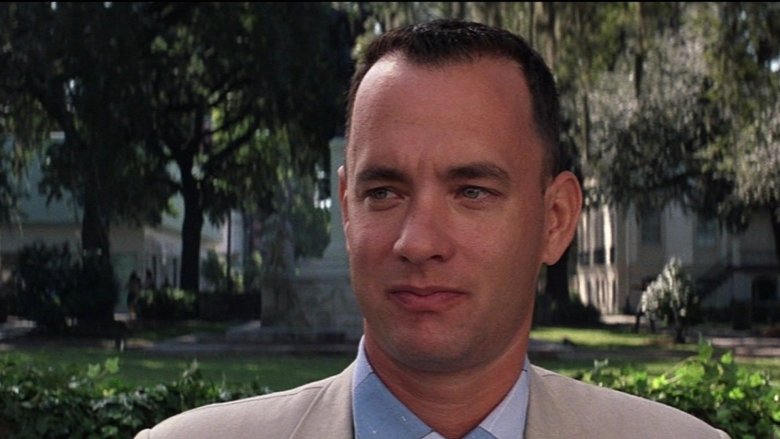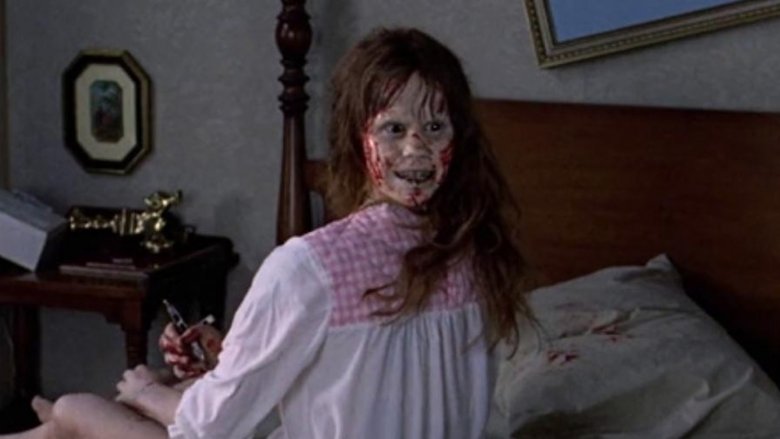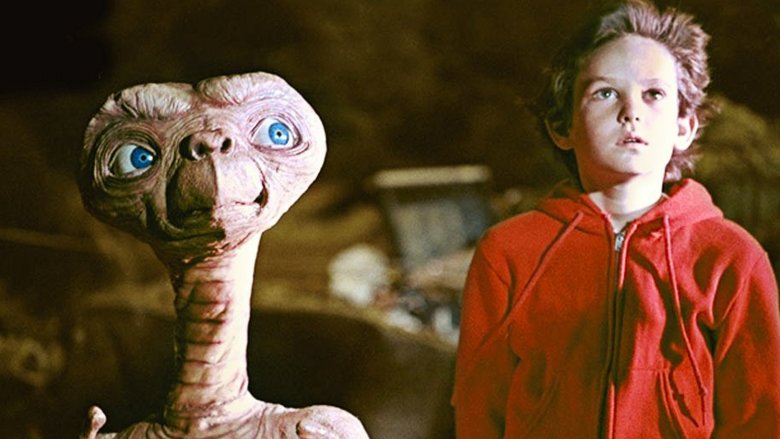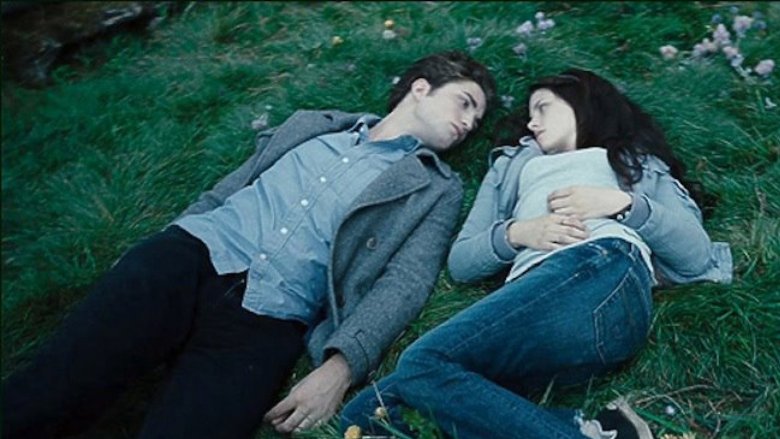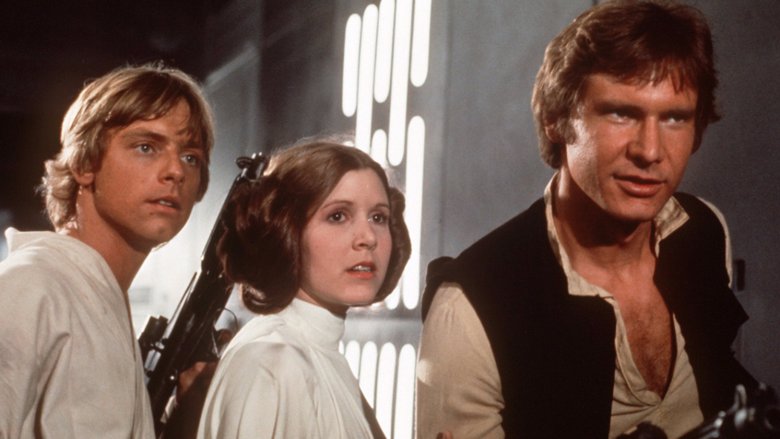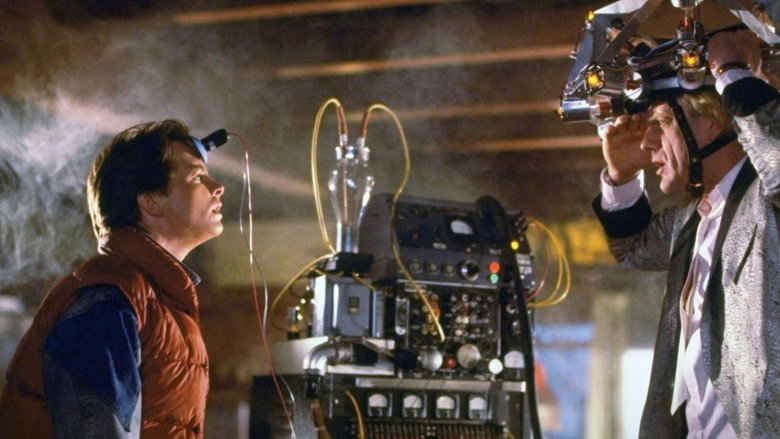Hit Movies That Studio Executives Hated
Being a big Hollywood filmmaker or studio executive might seem like a dream job, but getting a movie made is definitely not as easy as it looks. Often, just getting your foot in the door is the hardest part. Every day, studios reject dozens of movie pitches—even the really good ones—and whether a great script actually gets made usually comes down largely to luck and perseverance. Here are some of the best examples of hit movies that were hated by studios ... at least until they turned out to be moneymaking machines.
The Breakfast Club (1985)
It may be a beloved cult classic now, but the 1985's The Breakfast Club was considered dead on arrival by Universal executives. Unlike some of John Hughes' other coming-of-age films (like Sixteen Candles), Club didn't follow the teen movie "formula." As Hughes explained, "[Sixteen Candles] had those standard elements to it—you had to have a party scene, a shower scene and you had to find ways to fit them in." But with The Breakfast Club, that formula presented problems. As Hughes pointed out, "How will we accomplish that in a movie about five kids in a library?"
Hughes eventually added a "ridiculous" (and later cut) scene during which Principal Vernon watches a topless female gym teacher perform an underwater ballet—one that, as he later revealed, "was designed not to work." According to Hughes, The Breakfast Club had a particularly bad first screening. "The film ended, [the studio executives] stood up and didn't say a word ... the producer said, 'It's a piece of s—. It's horrible. It's just a bunch of kids in school talking.'" Convinced that the film would fail, Universal released it in February—traditionally a dumping ground for bad movies. Considering that it made over $51 million (on just a $1 million budget) and is widely considered one of the best "high school" films of all time, Universal should be counting their lucky stars those executives didn't pull the plug on The Breakfast Club—or sell it off to another studio.
Dumb and Dumber (1994)
In their directorial debut, the Farrelly brothers scored a huge hit with their 1994 buddy comedy Dumb and Dumber. But actually getting this film to the big screen was an uphill battle. Most agents wouldn't even look at a script titled Dumb and Dumber. "Then we named it A Power Tool is Not a Toy, which sounded hip, and they started reading it," Peter Farrelly explained. Even with a new (temporary) name, many studios still rejected it. According to producer Charles B. Wessler, "I got calls from executives saying, 'Why would you send me this s—?'"
Finally, New Line Cinema took a chance on Dumb and Dumber—but the studio's constant blunders nearly torpedoed the movie more than once. First, they tried to control the casting, but all of their "approved" choices—including Steve Martin, Gary Oldman, and Nicolas Cage—passed on the project. When the Farrellys got Jim Carrey interested, New Line decided his $400,000 fee was too much. Carrey soon rocketed to stardom with Ace Ventura, and the studio belatedly changed its tune. They ended up paying $7 million to sign him, which was nearly half of the movie's $16 million budget. After this costly mistake, New Line fought back—hard—when the Farrellys and Carrey requested Jeff Daniels as the other lead. "They said, 'Please, anyone but him,'" Bobby Farrelly recalled. Hoping he'd turn it down, the studio offered Daniels a measly $50,000. Thankfully for fans, he didn't say no—because who could imagine Nic Cage and Martin Short as Harry and Lloyd?
American Graffiti (1973)
In 1973, George Lucas' coming-of-age comedy American Graffiti earned critical acclaim—and even an Oscar nomination. But just two years before, nobody was interested in his idea for a "musical" teen movie. After countless rejections, an adventurous United Artists executive finally gave Lucas $10,000 to develop the screenplay. Unsure of his own writing abilities, he hired a USC classmate to finish the script, but the resulting screenplay "was completely different" from Lucas' original vision, and "more like Hot Rods to Hell."
With the $10,000 spent on an unusable screenplay, Lucas was forced to write American Graffiti himself—but United Artists rejected his script, on the grounds that the interwoven story with a rock 'n' roll soundtrack was too bizarre. After rejections from MGM, Paramount, Fox, and Columbia, Francis Ford Coppola signed on as a producer, and American Graffiti was finally bought by Universal—with strings attached. Lucas couldn't use studio space for filming and was given only a $750,000 budget, $90,000 of which was spent on the soundtrack. The studio even tried to change the name, suggesting cringeworthy alternatives like Coppola's Rock Around the Block. Universal clearly didn't expect Lucas' film to be a success, but they had a surprise hit on their hands after it premiered. All their penny-pinching had an unexpected side effect, too: American Graffiti became one of the most profitable films of all time.
Pulp Fiction (1994)
Today, the 1994 crime film Pulp Fiction is widely considered to be director Quentin Tarantino's masterpiece. However, the first studio to have this cult classic land in their lap hated it—and eventually sold it off.
In 1992, Tarantino and co-writer Roger Avary developed the Pulp Fiction script from old and unused material they'd written. "We took all the best scenes, laid them out on the floor and basically just started moving them around," Avary explained. Because of a preexisting deal with Tarantino's production company, the "first look" went to Columbia TriStar. The studio paid for an option, but they hadn't actually seen the screenplay yet.
When Avary and Tarantino turned in their script, TriStar hated it, telling them, "this is the worst screenplay that this film company has ever been handed. This is awful. It's not funny. It makes no sense." The studio put Pulp Fiction in turnaround, offering it to the highest bidder. It was soon snapped up by Miramax, where Tarantino was given an $8 million budget and almost complete creative freedom. This proved to be a great deal for all concerned: Pulp Fiction went on to earn popular acclaim and over $213 million at the box office, launching Tarantino's acclaimed filmmaking career in earnest—and cementing a long-running partnership with Miramax in the bargain.
Boogie Nights (1997)
Boogie Nights director Paul Thomas Anderson is all too familiar with the struggle to get a movie made. Based on a short film Anderson made in high school about porn star Dirk Diggler, the script for Boogie Nights was rejected by multiple studios. In an internal memo from 20th Century Fox, executives rated the concept and storyline "poor," while the dialogue and characterization were only "fair." Eventually, Nights found a home at New Line Cinema, where president Michael De Luca went "totally gaga" over the script. Despite this promising development, the battle over Boogie Nights wasn't over just yet.
After a horrible experience getting his 1996 debut film Sydney (later retitled Hard Eight) to the big screen, Anderson wasn't willing to compromise with studio executives. Initially, the director wanted Boogie Nights to be rated NC-17 and have a three-hour running time. De Luca pushed back, telling Anderson the film had to be both shorter and tamer. The director finally acquiesced, managing to cut enough material to secure an R rating and come in at 155 minutes, and the rest was hit movie history.
Home Alone (1990)
John Hughes' massive success with The Breakfast Club didn't make getting the green light for his later films any easier. In fact, Hughes and director Chris Columbus had almost as many problems with their classic 1990 holiday comedy Home Alone. Hughes and Columbus briefly worked together on National Lampoon's Christmas Vacation for Warner Bros., but Columbus left the project after clashing with star Chevy Chase. Instead, Hughes had him work on Home Alone, then in pre-production at Warners.
Although the studio had just dropped over $25 million making Christmas Vacation, execs wanted to reduce their comedy budgets. As a result, Home Alone was assigned just $14 million. When Columbus told them it would cost $17 million to make, the studio didn't negotiate; instead, they canceled the project just three weeks before production started and put the rights up for sale. Joe Roth at 20th Century Fox bought Home Alone and gave it an $18 million budget—but even the stars didn't expect it to be a blockbuster. Roth's gamble paid off in a big way after Home Alone was released, with the movie earning over $476 million worldwide at the box office. These days, Warners actually uses the film they discarded as a selling point for Christmas Vacation, making sure readers know their classic holiday movie was "written by John Hughes (Home Alone series)."
Forrest Gump (1994)
Although it won six Academy Awards, the classic 1994 drama Forrest Gump almost wasn't made. Starting in 1985, producer Wendy Finerman spent nearly a decade trying to get it into production. Warner Bros. had held the rights, but they weren't very excited about the project—even after Tom Hanks expressed interest in the title role. Unhappy with the script development, Warners put the film up for sale. Paramount traded for the rights, giving Warners the screenplay for Executive Decision while they took Forrest Gump. Eager to dump the film, Warners even gave Paramount $400,000 on top of the trade.
It took several years for writer Eric Roth to put together the screenplay. As production finally approached, Paramount executives got nervous when the budget creeped towards $40 million, and with only days left until filming began, the producers were told to cut nearly $10 million in costs—or the studio would pull the plug. Hanks and director Robert Zemeckis eventually took a 50 percent pay cut, saving $8 million and ensuring the production could go forward. As with their massive Home Alone blunder, Warners lost another blockbuster—Forrest Gump was Hollywood's latest hit movie, and earned more than $677 million worldwide.
The Exorcist (1973)
When author William Peter Blatty published his supernatural horror novel The Exorcist in 1971, it was initially a commercial failure. "I got very nice reviews," Blatty explained, "but nobody was buying the book." Next, Blatty unsuccessfully tried to generate interest in Hollywood for an adaptation of his novel, later claiming, "It was submitted to every studio in town ... I could paper the walls of my bathroom with rejection slips." Even worse, large retailers started actually returning their unsold copies of the book to his publisher. In a stroke of luck, Blatty managed to score an unplanned and unusually long guest spot on The Dick Cavett Show, where he was able to talk about his book for nearly 45 minutes.
Hollywood finally took notice when The Exorcist topped the New York Times bestseller list. Warner Bros. studio head John Calley read the book and loved it, after which the studio bought the rights and asked Blatty to write the script—which later earned the author an Oscar for Best Adapted Screenplay. The 1973 adaptation of The Exorcist went on to earn over $441 million at the box office on just a $12 million budget. Considered a horror masterpiece today, it's likely that The Exorcist would never have been made but for Blatty's perseverance and his lucky appearance on live television.
E.T. the Extra-Terrestrial (1982)
Steven Spielberg's 1982 science fiction hit movie E.T. the Extra-Terrestrial is beloved by many today, but it almost wasn't made. Initially conceived as a scary sci-fi horror film called Night Skies, Spielberg developed it as a screenplay for Columbia Pictures—who really wanted a follow-up to his 1977 hit Close Encounters of the Third Kind. The story evolved, becoming more "friendly" as Spielberg worked on it with screenwriter Melissa Mathison, and Columbia execs weren't happy with the changes, calling the new screenplay—now titled E.T. and Me—"a wimpy Walt Disney movie." Frank Price, the CEO of the studio at the time, put the project into turnaround.
Reportedly angry with both Price and Columbia, Spielberg let Sid Sheinberg at Universal Studios know that Columbia was ready to sell E.T. Although Universal acquired the script for just $1 million, Price negotiated a smart deal, securing a 5 percent stake for Columbia in E.T.'s future profits. The movie ended up earning over $792 million at the box office, meaning that—as a Columbia exec later quipped—"I think that year we made more on that picture than we did on any of our films."
Twilight (2008)
While 2008's Twilight received mixed reviews, there's no question that the movie made money hand over fist. The first installment in an eventual blockbuster franchise, it raked in over $393 million at the box office, but at first, nobody in Hollywood wanted to make it—even though it was based on a bestselling novel by Stephenie Meyer. According to Twilight producer Mark Morgan, he sold the original option to Meyer's book to Paramount's MTV Films in 2004, where it languished after studio execs weren't happy with the initial screenplay.
Paramount's version differed significantly from the novel, with an action-movie plot involving Bella becoming a vampire and her father dying. After the studio shelved Twilight, Morgan unsuccessfully tried to sell it, suffering through a seemingly endless series of rejections before Twilight was finally picked up by Summit Entertainment. The script was rewritten entirely and it took several years to get there, but Twilight was a success when it finally arrived on the big screen.
Star Wars (1977)
While Star Wars is a billion-dollar franchise today, director George Lucas struggled to get the first film off the ground in the early 1970s. The same United Artists executive who paid Lucas $10,000 to make his American Graffiti script was initially on board for his unnamed "space opera fantasy film," but, that deal fell through after the studio passed on Graffiti. Despite the setback, Lucas considered that moment the real birth of Star Wars. "It was only a notion up to then," he explained. "At that point, it became an obligation!" After completing Graffiti, he spent "eight hours a day, five days a week" working on Star Wars.
Even after the success of American Graffiti, Lucas couldn't find a single studio willing to foot the bill for the ambitious sci-fi project. He took his Star Wars pitch to Universal (where Graffiti was made), but they weren't interested. Ironically, Disney also passed. Finally, 20th Century Fox took an $11 million chance on Star Wars, giving Lucas $150,000 to write and direct the film—and all the merchandising and sequel rights. Disney tried to correct their mistake later when they bought Lucasfilm, but Fox held on to the distribution rights to the original trilogy—at least until Disney up and bought the bulk of Fox's entertainment assets several years later.
Back to the Future (1985)
Disney didn't just miss the boat on Star Wars—they also turned down a chance to make the classic 1985 time travel adventure comedy Back to the Future, one of the biggest hit movies of the era. Robert Zemeckis and Bob Gale started developing the script for Columbia Pictures in 1980, delivering the first draft in February 1981, at which point Columbia declined to pursue the project further. "They thought it was a really nice, cute, warm film, but not sexual enough," Gale explained. "They suggested that we take it to Disney." Over the next two years, the duo refined their script and pitched it to every other major studio, but nobody was interested in making a family-friendly teen movie. Finally, Zemeckis and Gale tried the screenplay at Disney—only to be told that "a mother falling in love with her son was not appropriate for a family film under the Disney banner."
After Zemeckis scored a hit with 1984's Romancing the Stone, Steven Spielberg signed on to produce, bringing Back to the Future to his Amblin imprint, and Universal's Frank Price swapped the licensing for Double Indemnity to Columbia in order to secure the rights to make Back to the Future. Although the movie now had a home, the troubles continued. Zemeckis decided they'd miscast Eric Stoltz as the lead and spent $4 million to reshoot hours of footage with new star Michael J. Fox. Fortunately, when it finally premiered in July 1985, Back to the Future was massively popular, earning over $381 million at the box office.
